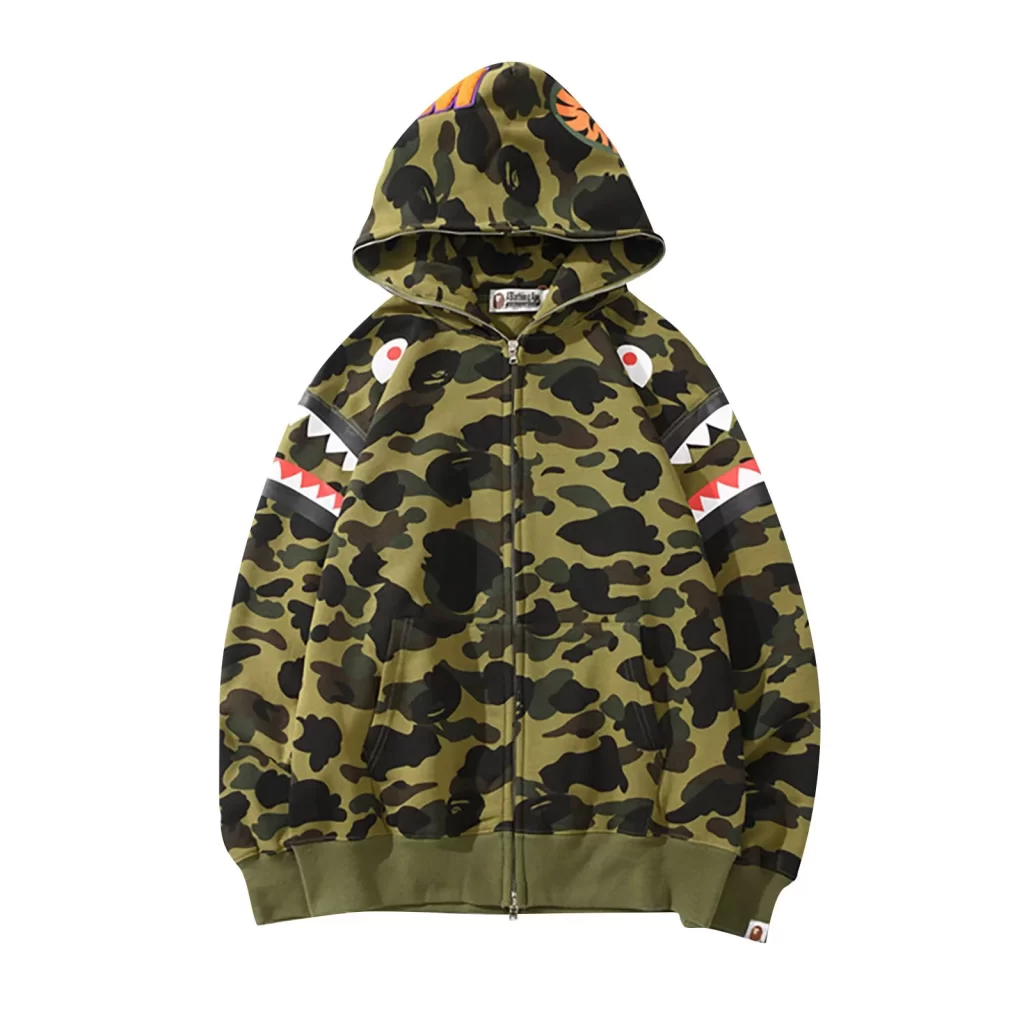
BAPE (A Bathing Ape) is a famous Japanese streetwear brand known for its bold designs and iconic hoodies. While BAPE hoodies have gained a massive following worldwide, concerns over sustainable and ethical manufacturing practices in the fashion industry have arisen. This article will examine bapehoodieofficial.com steps toward sustainability and ethical practices in hoodie manufacturing.
The Need for Sustainable and Ethical Manufacturing Practices:
With the rise of fast fashion, concerns about sustainable and ethical manufacturing practices in the fashion industry have become more prevalent. This is due to the environmental impact of producing and disposing of clothing and the exploitation of workers in the manufacturing process. Customers are increasingly seeking out brands that prioritize sustainability and ethical practices.
BAPE’s Commitment to Sustainability:
BAPE has taken steps towards sustainability in its manufacturing process. The brand has implemented various initiatives to reduce its environmental footprint. For example, BAPE has introduced environmentally-friendly materials, such as recycled polyester and organic cotton, into their production process. They have also implemented water and energy-saving technologies in their factories to minimize waste.
Ethical Manufacturing Practices:
BAPE has also taken steps to ensure that its manufacturing practices are ethical. The brand has partnered with factories that meet high ethical standards, and they regularly inspect their factories to ensure compliance. BAPE also ensures that its workers receive fair wages and safe working conditions. Additionally, the brand has implemented a code of conduct that its suppliers must adhere to, ensuring that their business partners follow ethical practices.
Embroidery and Appliqué
Embroidery and appliqué are also critical materials used in chromeclothing.co hoodies. The brand is known for its intricate embroidery and appliqué work, which adds depth and texture to the hoodie’s design. Embroidery involves stitching designs or patterns onto the hoodie using colored thread, while appliqué involves adding patches or other fabric elements to the hoodie’s design.
The embroidery and appliqué work on Chrome Hearts hoodies is typically done by hand, adding to the hoodie’s unique, artisanal feel. It is often done using high-quality thread and fabric, ensuring that it is durable and long-lasting.
Dyes and Pigments
The dyes and pigments used in Chrome Hearts hoodies are another important aspect of the brand’s materials. The brand is known for its unique color combinations and use of vibrant, eye-catching hues. This is achieved through the use of high-quality dyes and pigments, which are carefully chosen for their durability and color-fastness.
The dyes and pigments used in Chrome Hearts hoodies are typically eco-friendly and non-toxic, ensuring that they are safe for both wearers and the environment. They are also carefully tested to ensure that they meet the brand’s exacting standards for color accuracy and consistency.
Sustainable and Ethical Hoodie Materials:
BAPE has incorporated sustainable and ethical materials into its hoodie designs. For example, the Shark Hoodie is made with organic cotton and recycled polyester. The use of organic cotton reduces the environmental impact of conventional cotton farming. Recycled polyester is made from recycled plastic bottles, reducing the amount of plastic waste that ends up in landfills and oceans.
In addition, BAPE’s Tiger Hoodie is made with a blend of organic cotton and lyocell. Lyocell is a sustainable material from wood pulp harvested from responsibly managed forests. This material is more environmentally friendly than conventional cotton, requiring less water and energy.
Limited Edition Sustainable Hoodies:
BAPE has also released limited edition sustainable hoodies. For example, the Eco-Friendly Shark Hoodie was made with 100% recycled polyester. The hoodie was only available in limited quantities and was a testament to the brand’s commitment to sustainable manufacturing practices.
Collaborations for Sustainable Hoodies:
BAPE has also collaborated with other brands to create sustainable hoodies. One such collaboration was with the environmental organization One Earth One Ocean. The partnership produced a hoodie made with recycled polyester and featured a design highlighting the importance of ocean conservation.
Packaging:
BAPE has also taken steps towards sustainable packaging. The brand has reduced the amount of packaging used in its products, opting for more sustainable materials. For example, they have introduced biodegradable packaging made from cornstarch.
Conclusion:
As a famous streetwear brand, BAPE prioritizes sustainable and ethical manufacturing practices. The brand has taken steps to reduce its environmental footprint and ensure ethical manufacturing practices in its factories. Incorporating sustainable and ethical materials into their hoodie designs and releasing limited edition sustainable hoodies are further steps towards sustainability. By committing to these practices, BAPE sets an example for other brands to follow and shows that it’s possible to create stylish clothing while being mindful of our impact on the environment and the people who make our clothes.
